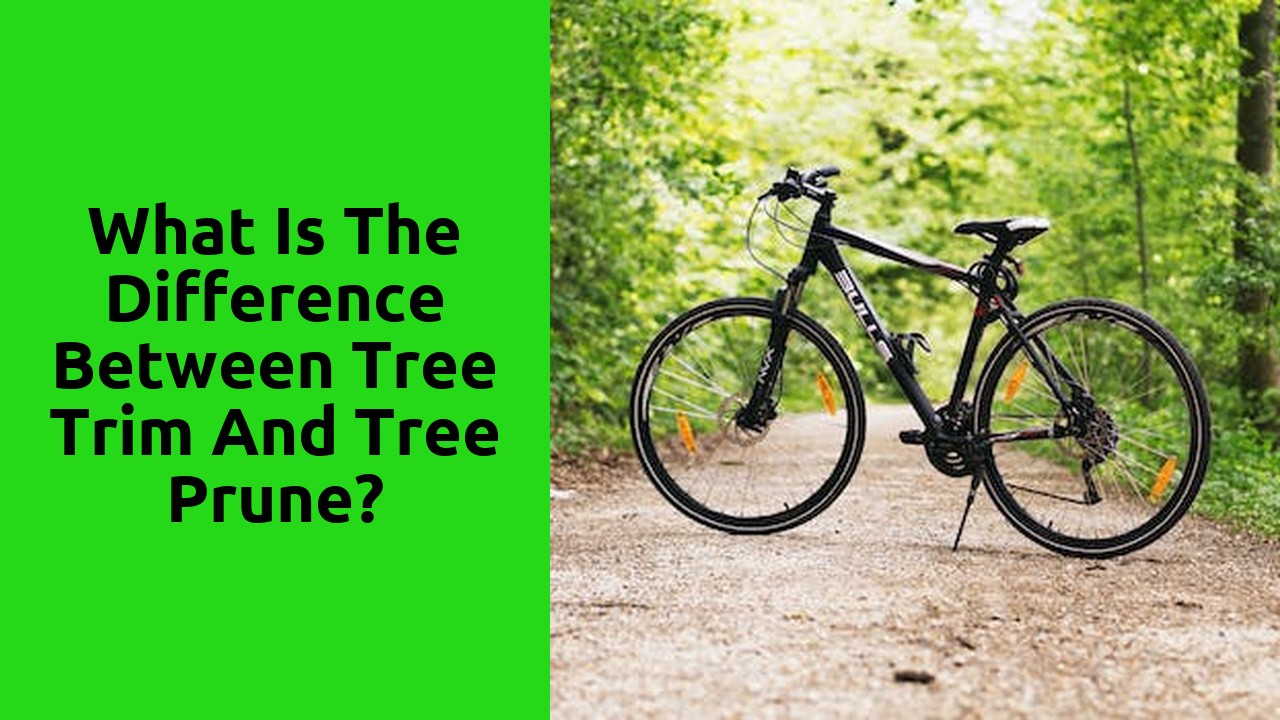What is the difference between tree trim and tree prune?

Understanding the Terminology
Before diving into any subject, it is essential to have a clear understanding of the terminology associated with it. This holds true for any field or discipline, as specific terms and phrases are often used to convey particular meanings. When it comes to understanding the terminology, it entails familiarizing oneself with the vocabulary, jargon, and concepts that are commonly employed in the subject matter. By doing so, individuals can effectively communicate, interpret, and engage with the topic at hand.
In the realm of academia, mastering the terminology is especially crucial for students and researchers. For instance, in a scientific context, terms like hypothesis, variable, and control group hold specific meanings that are fundamental to comprehending and conducting experiments. Moreover, disciplines such as history, literature, and philosophy feature their own unique lexicons, ranging from terms like feudalism and narrative structure to existentialism and logical positivism. Without a solid grasp of these terms, navigating through textbooks, lectures, and scholarly articles can prove to be a daunting task. Therefore, taking the time to familiarize oneself with the key terminology is paramount for success in any academic pursuit.
Tree Trimming Explained
Tree trimming is an essential component of maintaining healthy trees and promoting overall safety in outdoor spaces. By selectively removing branches and limbs, tree trimming helps to improve the tree's structure, appearance, and longevity. It also plays a crucial role in preventing potential hazards, such as falling branches, from causing property damage or endangering people's safety.
When it comes to tree trimming, it is important to understand the purpose behind this activity. First and foremost, tree trimming helps to maintain the tree's shape and size, allowing it to fit harmoniously into its surroundings. Additionally, by removing dead or decaying branches, tree trimming can enhance the tree's overall health and vitality. Regular trimming also controls the growth and spread of trees, preventing them from interfering with power lines or encroaching on nearby structures. Overall, investing in proper tree trimming is a proactive measure to promote both the aesthetics and safety of outdoor environments.
The Purpose of Tree Trimming
Tree trimming serves a vital purpose in the overall health and aesthetics of trees. By selectively removing dead or damaged branches, it helps prevent the risk of potential hazards such as falling debris during storms or high winds. Regular tree trimming also ensures that trees maintain a balanced structure, allowing for proper distribution of weight and reducing the likelihood of limb failure.
Additionally, tree trimming promotes the overall growth and development of trees. By removing excess branches and foliage, it improves air circulation and allows more sunlight to reach the lower parts of the tree. This, in turn, stimulates healthy new growth and prevents the accumulation of moisture, which can lead to the growth of harmful fungi or diseases. Overall, proper tree trimming enhances the longevity and beauty of trees while safeguarding the surrounding environment and structures.
Techniques Used in Tree Trimming
Tree trimming is an essential practice that helps maintain the health and aesthetics of trees. Various techniques are employed by professionals to ensure effective trimming. One commonly used technique is crown thinning, where selective removal of branches is carried out to reduce the density of the tree canopy. This allows an improved airflow and sunlight penetration, benefiting the overall health of the tree. Crown thinning also helps prevent the risk of branches breaking during storms or high winds, making it a vital technique for tree maintenance.
Another important technique used in tree trimming is crown raising. This involves removing lower branches to increase vertical clearance between the ground and the lower canopy of the tree. Crown raising is particularly useful in areas that experience heavy foot traffic or for trees located near buildings and structures. By raising the crown, the tree becomes more accessible and reduces the risks of injury or damage. Additionally, crown raising improves the aesthetics and allows for better visibility under the tree, enhancing the overall appeal of the landscape.
When to Trim Trees
Trimming trees is an essential task that should be undertaken regularly to maintain their health and aesthetic appeal. But when is the best time to trim trees? The answer largely depends on the type of tree and the specific objectives you have in mind.
For deciduous trees, the ideal time for pruning is during winter or early spring when the trees are dormant. This allows for better visibility of the tree's structure, and pruning during this time encourages vigorous growth in the coming season. On the other hand, pruning evergreen trees is best done in late winter or early spring to minimize the risk of frost damage. However, some evergreen species may have specific seasonal constraints, so it's crucial to consult a professional arborist for guidance. Overall, timing your tree trimming efforts strategically can help promote healthier growth and prevent potential issues in the long run.
The Benefits of Tree Trimming
Properly trimming trees can offer a range of benefits for both homeowners and the environment. One of the primary advantages is improved safety. Regular tree trimming helps eliminate dead or weak branches that are at risk of falling, potentially causing damage to property or injuring people. By removing these hazardous branches, the overall safety of the surrounding area is significantly enhanced.
In addition to safety, tree trimming also promotes the health and longevity of the trees themselves. Pruning the branches allows for better air circulation and sunlight penetration, leading to improved growth and vitality. By removing diseased or damaged parts, the risk of spreading infections or infestations is minimized, helping to ensure the overall health of the tree. Moreover, proper trimming encourages the development of a strong and well-balanced structure, reducing the chances of breakage during storms or strong winds.
Related Links
Does pruning mean trimming?What are 3 most common types of pruning?